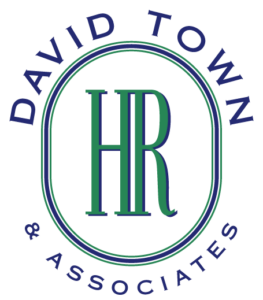Managing Employee Performance – Setting Expectations Part 2

This blog is part of a series of blogs focusing on the topic of “Managing Employee Performance”. Managing employee performance in the workplace is comprised of all of the interactions and activities that take place between an employer and an employee. These interactions and activities result in the achievement of goals and expectations. The previous blog offered a few insights into how to set expectations. This blog will continue the topic of how to set expectations with a review of goal setting.
Motivating Employees Through Goal Setting
It is commonplace for organizations to use the goal setting process. They do this as a means to motivate employees toward the achievement of organizational objectives. However, the process of setting goals must be managed effectively in order for it to be valuable. In a study of organizational behavior theory on goal setting, there is plenty of evidence to suggest that the motivational value of goal-setting depends on two things:
- Whether the employer has set a goal that is realistically achievable
- Whether the employee receives feedback with respect to their progress in achieving the goal.
I will address the second point in a future blog on creating a motivation environment.
SMART Goals
A widely used acronym for setting goals is “SMART”. In order to make expectations clear, the goal should be:
Specific – clear articulation of expectations
Measurable – a means to assess achievement of the goals
Achievable – challenging but not so difficult that they can’t be achieved
Relevant – contributes to the achievement of a department/organisational goal
Time-framed – there is a clear date of completion (milestones can help as well)
An example of a goal that is not SMART would be saying, “let’s reduce costs”. This can be improved by instead saying, “let’s examine the top twelve areas of spending in the operations budget for our departments over the next three months with the goal of reducing year-over-year spending by 5%. This way we can meet the organizations objective of re-directing spending to an increased investment in research and development”.
The “A” in SMART stands for Achievable. Organizations risk undermining the motivation of their employees if the goals they set for employees are not achievable. They also risk other forms of bad behaviour. Stephen Covey, a noted author on the topic of principled leadership, was quoted as saying “There’s strong data that, within companies, the No. 1 reason for ethical violations is the pressure to meet expectations, sometimes unrealistic expectations.”
Setting Achievable Goals
So, how does an organization ensure that the goals they set for employees are achievable? I believe that there are two important strategies that organizations should employ in order to develop goals that are achievable.
Involve the Employees in the Process
Managers must strategize to ensure that they involve employees in the goal setting process. Management can start with macro goals and a plan of action for each department; however, they must involve the employees in order to get the employee’s commitment to the goal and to identify any barriers to the achievement of the goals that management may not be fully aware of. Also, having the employee participate in the goal-setting process will give them a much stronger sense of accountability for the goals because they help develop them.
Integrate a Job Duty Review
The second strategy needed for developing achievable goals is to integrate a review of the job duties into the goal-setting process. Organizations should review the expectations outlined in a job description at the same time as a review of time-framed goals. When it comes to thinking about managing employee performance and expectations, the only real difference between a job description and the annual goal-setting exercise is the timeframe.
A job description typically has an indefinite time frame. The expectations outlined in the job description remain in place until there is a significant shift in organizational structure or a change in the employee’s designated role. The expectations outlined in a goal-setting process typically have a start date and an end date. However, they take time to accomplish and should be integrated into the outlined job description of the employee.
Employers should provide an estimate of time time required to complete the goals outlined in the goal setting process. There should also be an acknowledgment of how the time required to achieve the goals will be integrated with the time required to achieve the ongoing expectations of the job. Employers should also acknowledge the time required to achieve the goals Failure to do this can lead to issue such as employee burnout or employees who pursue achievement of short-term goals at the expense of important ongoing job expectations.
Conclusion…
In summary, the first step in effectively managing employee performance is the process of setting expectations. This includes both the ongoing job accountabilities and the time framed goals.
The next few blogs will offer insights on the importance of sharing feedback on the employee’s performance in a manner that has the best chance of being embraced by the employee so that they are able to achieve success.
As always, I welcome your feedback. You can connect with me via email or telephone or leave a comment right here on the site.
Until next time,
Dave










 Identifying the traits, values and virtues that are present is a person of good character is a pursuit that has been going on for centuries. Aristotle identified twelve virtues that are present in someone of good character. As you might expect, the virtues are not mutually exclusive and can provide great insights to how good character impacts business leadership. For example, Aristotle included courage, practical wisdom and right ambition in his list of virtues. Many studies of leadership traits identify perseverance as an important trait that successful leaders possess. At the heart of perseverance is the concept of persistence. This is where character comes into play.
Identifying the traits, values and virtues that are present is a person of good character is a pursuit that has been going on for centuries. Aristotle identified twelve virtues that are present in someone of good character. As you might expect, the virtues are not mutually exclusive and can provide great insights to how good character impacts business leadership. For example, Aristotle included courage, practical wisdom and right ambition in his list of virtues. Many studies of leadership traits identify perseverance as an important trait that successful leaders possess. At the heart of perseverance is the concept of persistence. This is where character comes into play. This blog is the first in a series of blogs commenting on character traits – particularly positive character traits – and why they are important to leadership. Let’s start with understanding the concept of character. The dictionary definition according to dictionary.com is as follows:
This blog is the first in a series of blogs commenting on character traits – particularly positive character traits – and why they are important to leadership. Let’s start with understanding the concept of character. The dictionary definition according to dictionary.com is as follows: